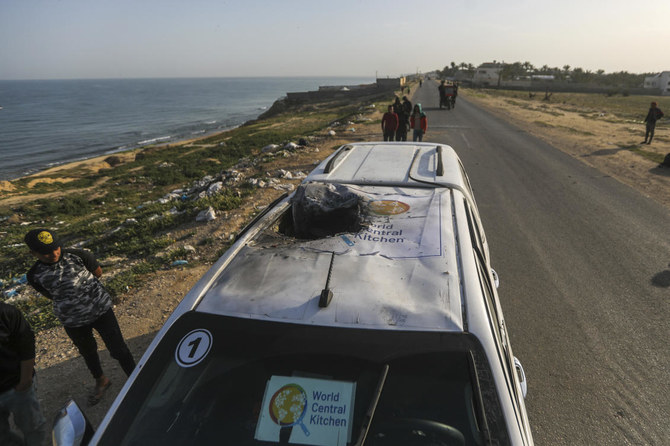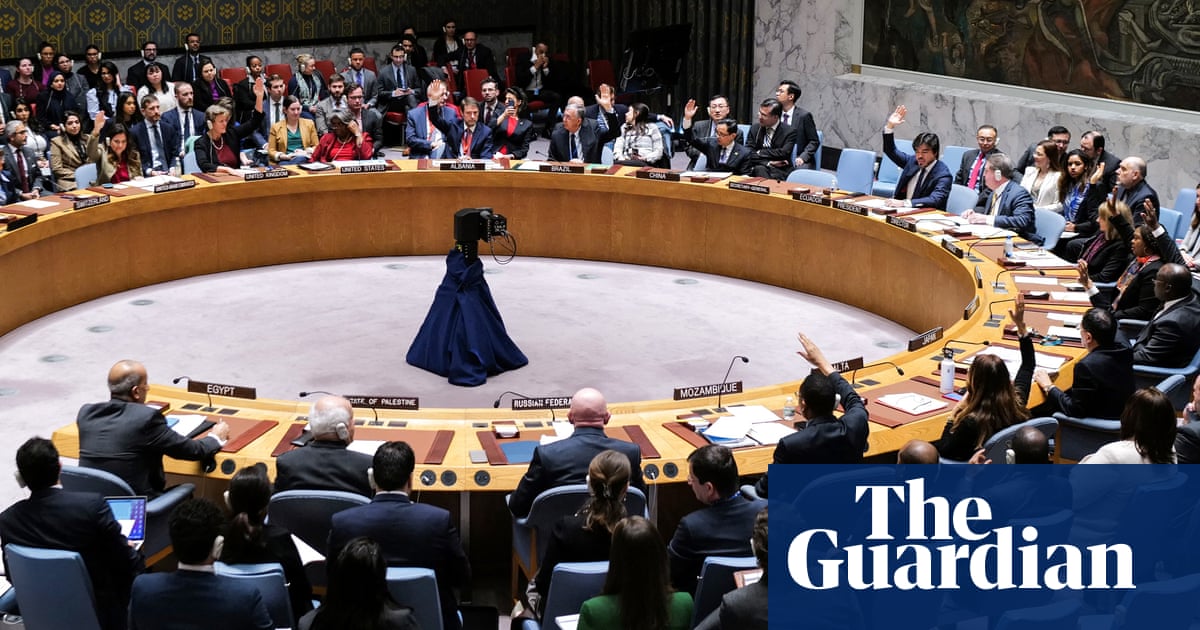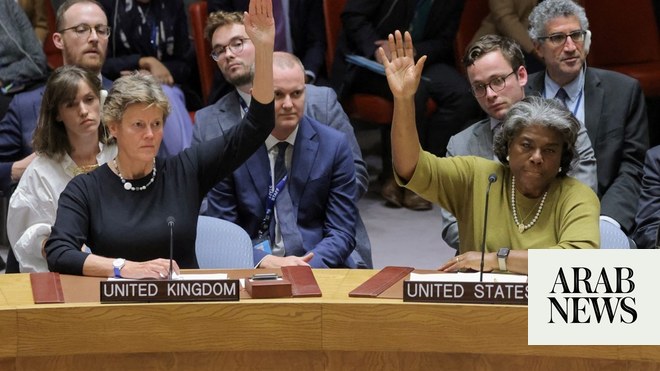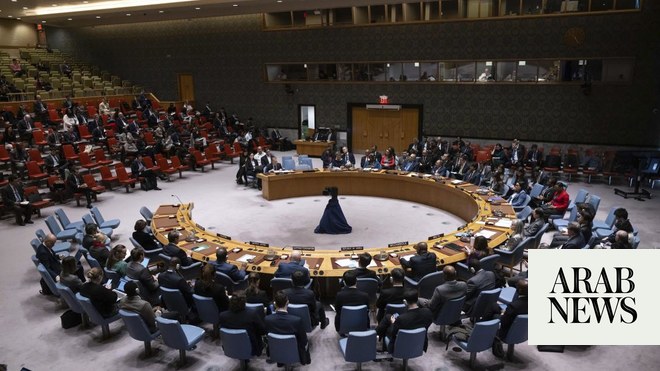
The UN security council has voted for a resolution calling for large-scale delivery of aid to Gaza in an effort to contain the imminent threat of famine and deadly epidemics.
The resolution did not however demand a suspension of hostilities, which was opposed by the US, which also insisted on removing a clause giving the UN exclusive control of humanitarian deliveries.
Instead, it appealed only for the creation of “conditions for a sustainable cessation of hostilities”.
The resolution calls for the immediate appointment of a UN humanitarian coordinator to lead the task of increasing the present meagre flow of humanitarian supplies into Gaza, and demands that the parties involved – primarily an unspoken reference to Israel – give the coordinator their full cooperation.
However, the UN secretary general, António Guterres, was sceptical the resolution alone, without a ceasefire, would create the conditions for an effective relief operation.
“I hope that today’s security council resolution may help improve the delivery of much-needed aid but a humanitarian ceasefire is the only way to begin to meet the desperate needs of people in Gaza and end their ongoing nightmare,” Guterres said on social media.
“Many people are measuring the effectiveness of the humanitarian operation in Gaza based on the number of trucks from the Egyptian Red Crescent, the UN and our partners that are allowed to unload aid across the border. This is a mistake,” the secretary general told reporters.
“The real problem is that the way Israel is conducting this offensive is creating massive obstacles to the distribution of humanitarian aid inside Gaza.”
The vote had been postponed four times before a version was produced on Thursday night which the Biden administration said it could support. It opposed the call for an immediate suspension of fighting and a clause that gave the UN exclusive oversight for humanitarian delivery.
On Friday, all council members voted for the resolution put forward by the United Arab Emirates, except for the US and Russia, who both abstained.
Linda Thomas-Greenfield, the US ambassador to the UN, said Washington overwhelmingly supported the resolution, but abstained because it lacked any condemnation of the Hamas attack which ignited the current war.
She said: “We’re deeply disappointed, appalled actually, that once again the council was not able to condemn Hamas’s horrific terrorist attack on 7 October.
“And I can’t understand why some council members are standing in the way and why they refuse to condemn these evils unequivocally.”
The Russian ambassador, Vasily Nebenzya, said the US had rendered the resolution toothless.
“Ultimately, the wording that is being put to a vote today has been extremely neutered,” Nebenzya said, adding that the resolution left Israeli forces complete freedom of action.
“Anyone who votes in favour of the text as it is currently worded would bear responsibility for that, essentially becoming complicit in the destruction of Gaza.”
Explaining the Russian abstention, he said: “If this document weren’t supported by a number of Arab states, we would of course have vetoed it.”
Israel’s permanent representative, Gilad Erdan, called the resolution’s focus on aid mechanisms “unnecessary and disconnected from reality”.
“Israel is already allowing aid deliveries at the required scale,” said Erdan. Currently about 200 trucks of aid are entering Gaza each day, which the UN and other aid agencies said was a small percentage of what was needed for a population of more than 2.2 million people, 90% of whom are displaced.
The vote came as Israel expanded its ground offensive in Gaza, ordering new evacuations in Bureij, an urban refugee camp in the west of the strip, and announcing plans to send more ground troops to fight in southern Khan Younis.
Both areas had previously been declared safe for civilians fleeing from the north. Those Palestinians who have survived weeks of intense aerial bombardment are being forced into ever-smaller pockets of Gaza.
Eleven weeks into the conflict, nearly 85% of Gaza’s population has been displaced. They are cold, hungry and ravaged by disease, crammed into overcrowded shelters and sprawling tented settlements, where there is no clean water and little sanitation.
About a quarter of the population – half a million people – already face catastrophic hunger, and with Gaza under blockade that number is expected to climb fast. The entire population faces “an imminent risk of famine”, the UN warned on Thursday.
James Denselow, the head of conflict and humanitarian advocacy at Save the Children, said the resolution should help bring desperately needed supplies into Gaza by creating new border crossings and aid corridors, but did not go far enough.
“This may slow the descent into further humanitarian catastrophe if it results in a kind of leveraging open of aid supply,” he said. “That’s all positive and welcome, but we shouldn’t be under any illusion that even these aid access components are enough.”
Gaza needed a political process so it was no longer the most dangerous place in the world to be a child, an aid worker, a medic or a journalist, he said.
“We can talk about border crossings and numbers of trucks, but unless those trucks and that aid can move effectively within Gaza, or can be safe within Gaza, and we can have people get to [aid distribution points] safely – all of which have no sign of existing – then I think we’re misunderstanding the fundamental problems.”
The International Rescue Committee said: “From a humanitarian point of view, the failure of the [UN security council] to demand an immediate and sustained ceasefire is unjustifiable.”
More than 20,000 people have been killed by Israeli bombs and ground forces, most of them women and children. That toll amounts to nearly 1% of Gaza’s population before the war began. Thousands more dead are buried under rubble across devastated towns and cities.
Overall, about a third of the structures in the strip had been destroyed or damaged, the Associated Press reported. “Gaza is now a different colour from space. It’s a different texture,” said Corey Scher of the CUNY Graduate Center, who has used satellite images to map the destruction.
Brig John Deverell, the former director of defence diplomacy at the UK Ministry of Defence and a former senior British officer in the Palestinian territories, called on Britain to start work on a new resolution calling for an immediate ceasefire.
“The resolution is not slightly watered down from previous versions; it is completely diluted,” he said.
“It calls for the ‘creation of conditions’ to allow a sustainable ceasefire. This approach is back-to-front. In reality, the fighting must stop now, and then we can work on making it permanent.”
Underlining that nowhere in Gaza is safe, an airstrike killed six people including a child in a house in the southern city of Rafah, where Israel has urged civilians to seek safety, according to AP. A journalist for the agency saw their bodies at a hospital.
On Friday, Gaza’s Hamas-run health authority said 20,057 deaths had been recorded, the majority women and children. More than 53,000 people have been wounded, with many of those unlikely to get treatment.
The health system is in collapse, with only nine out of 36 hospitals still functioning. Many have been targeted in Israeli attacks and raids. On Thursday, troops stormed the Palestinian Red Crescent’s ambulance centre in the Jabaliya refugee camp, taking away paramedics and ambulance crews, the group said.
Israel blames civilian casualties on Hamas, saying it uses facilities such as schools and hospitals as shields for military activity.
Although talks on another break in fighting are under way in Cairo, with Egypt and Qatar acting as mediators between the warring parties, there is little hope of an immediate breakthrough.











